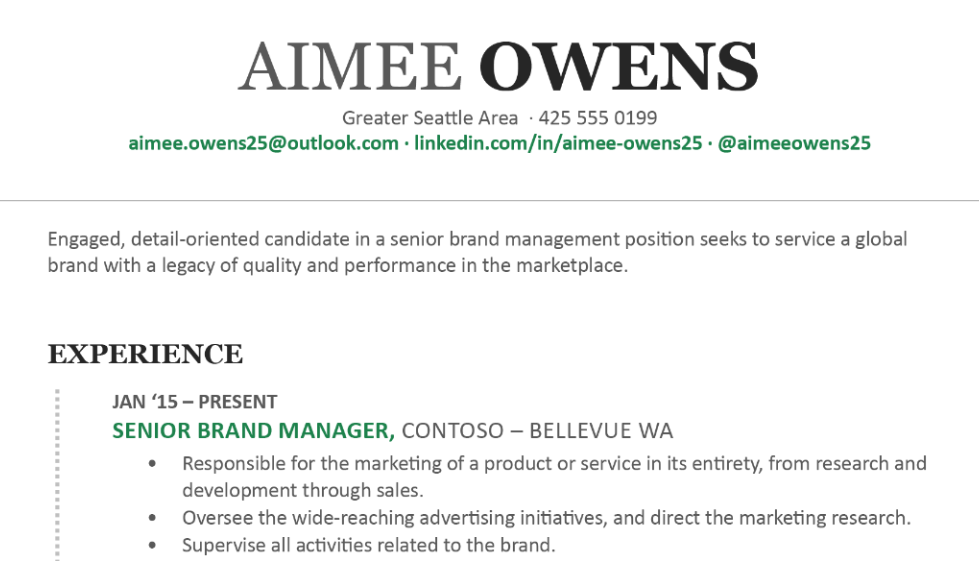Writing your resume is hard, right? Today, LinkedIn and Microsoft announced the launch of Resume Assistant in Word. The claim is that this tool will make it easier to update your profile and your resume. Let’s explore.
The Good: Technology that provides inspiration and reminders of content/skills you might include and connects you to job announcements that might be relevant.
The Bad: Differentiation is hard. Writing specific statements about what you did is important. You’ll still have to do that work to truly stand out on your resume or LinkedIn profile.
The Ugly: Did they seriously use a resume example in their video and article where the summary includes “detail-oriented” (on every list of over-used phrases) and experience that starts with “responsible for”? Almost every resume article you read will tell you not to use “responsible for” (for good reasons that we won’t go in to here – a quick search will bring up a dozen articles that explain why).
How to Make Resume Assistant Work for You
- Use the content it provides as a jumping-off point. Never, ever copy and paste from someone else’s profile and rarely copy and paste chunks of text from a job description. Instead, tell about a time that you’ve used that skill (keyword) – including the result or value that you added.
- Don’t consider this an invitation to make the content on your resume and LinkedIn profile the same. Your profile is conversational, professional introduction. Expand on the content in your resume, don’t copy it. Give people a corresponding, yet fresh perspective on your story.
- Do consider the audience of your profile as you update. Will your current boss or colleagues see this? How can you include stronger content without sounding like a job seeker (which isn’t necessary for recruiters to find you anyway)? You only get one profile, so it needs to speak to all your potential audiences.
- Avoid using a Microsoft resume template. From the videos I can’t tell if you must use a Microsoft Word resume template to use this feature. Word templates are troublesome for many reasons: your resume looks like everyone else who uses that template, the formatting can make it difficult to edit, and many elements have issues in an applicant tracking system. Use the Resume Assistant features, but steer clear of the templates.
- Take a deep breath … and realize that a quality resume or profile takes work. Sorry to break it to you, and if you want to differentiate yourself on either platform, it is going to take work. The best part is that gathering your stories, learning to tell them succinctly, and translating them into the future employer’s language gives you a great resume, an engaging LinkedIn profile, and a start at interview preparation. You can do it!
Reprinted from: LinkedIn – https://www.linkedin.com – 11.8.17

Sorry, the comment form is closed at this time.